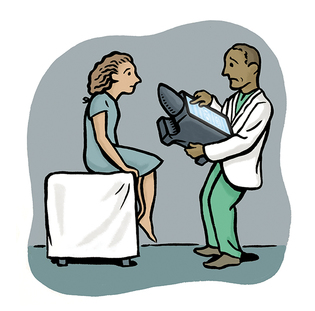 loading
loading
FindingsRoom for digital improvementMedical E-records get an F in usability.  Gregory NemecView full imageIf your doctor types constantly on her computer during your appointment, don’t be irritated. She probably hates it even more than you do. In 2009, Congress provided $27 billion in incentives for hospitals and doctors to start using electronic health records (EHRs) instead of paper. Today, the vast majority of health-care providers work with some kind of e-records system. Edward R. Melnick ’14MHS, a Yale assistant professor in emergency medicine, decided to find out how it’s going. Short answer: badly. “EHRs in general received a grade of F,” says Melnick, whose team gave 5,000 physicians a standard survey for evaluating just how usable an online system is. (He’s also the director of the Yale-VA Clinical Informatics Program.) By contrast, noted Melnick and colleagues in the Mayo Clinic Proceedings, Google received an A, Amazon a B, and Microsoft Word a C. EHRs were graded even lower than Microsoft Excel—which also got an F. Melnick says EHR systems are “functional, reliable, and secure” and “good for billing—a CFO’s dream come true.” But there’s a “big disconnect” in meeting the needs of doctors. Compared with the general US workforce, physicians exhibited more key signs of burnout in the most recent study (2017): 43.9 percent versus 28.1 percent. EHRs are often named as a contributor to burnout. “For every point that the usability scale goes up, there’s a 3 percent decrease in the odds of burnout,” Melnick notes. “All of us will eventually be patients, so we all have a vested interest in improving the EHR system.”
The comment period has expired.
|
|